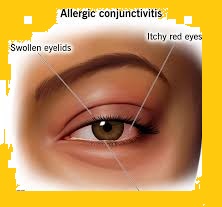What is Mucopurulent Conjunctivitis?
Mucopurulent conjunctivitis is an eye condition characterized by inflammation of the conjunctiva, accompanied by a yellowish, pus-like discharge. This condition can be uncomfortable and may affect vision temporarily. Understanding the causes is essential for effective treatment.
Common Causes of Mucopurulent Conjunctivitis
The most frequent causes of mucopurulent conjunctivitis include bacterial infections, such as those caused by Staphylococcus and Streptococcus species. These bacteria can enter the eye through various means, such as touching the eyes with contaminated hands or using unclean contact lenses. Viral infections, particularly adenoviral conjunctivitis, can also lead to mucopurulent symptoms, causing similar discharge.
Other Contributing Factors
In addition to infections, there are other factors that can contribute to the development of mucopurulent conjunctivitis. Allergies to pollen, dust, or pet dander can lead to an overreaction of the immune system, resulting in conjunctival inflammation. Environmental irritants, such as smoke or chemical fumes, may also play a role. Lastly, underlying medical conditions, like dry eye syndrome, can exacerbate symptoms.
Recognizing these causes is crucial for prompt treatment and management of mucopurulent conjunctivitis. If you experience symptoms, consult an eye care professional for a comprehensive evaluation.
Mucopurulent conjunctivitis is an eye condition causing inflammation and yellowish discharge from the eyes. Commonly caused by bacterial or viral infections, it can also be triggered by allergies or environmental irritants. Understanding the underlying causes is vital for effective treatment. If you’re experiencing symptoms like discomfort or temporary vision issues, consult an eye care professional for a thorough evaluation and management options. Learn more about the causes, symptoms, and treatment of mucopurulent conjunctivitis.

Mucopurulent Conjunctivitis is a type of conjunctivitis characterized by the presence of mucopurulent discharge, which is a thick, yellowish-green discharge that contains pus and mucus.
Causes of Mucopurulent Conjunctivitis
- Bacterial infections: Bacteria such as Staphylococcus aureus, Haemophilus influenzae, and Streptococcus pneumoniae can cause mucopurulent conjunctivitis.
- Viral infections: Viruses such as adenovirus and herpes simplex virus can also cause mucopurulent conjunctivitis.
- Chlamydial infections: Chlamydia trachomatis can cause mucopurulent conjunctivitis, especially in newborns.
- Allergic reactions: Allergic reactions to substances such as pollen, dust, or chemicals can cause mucopurulent conjunctivitis.
Symptoms of Mucopurulent Conjunctivitis
- Redness and inflammation: The eyes become red, inflamed, and swollen.
- Mucopurulent discharge: A thick, yellowish-green discharge that contains pus and mucus.
- Itching and burning: The eyes may feel itchy and burning.
- Blurred vision: The discharge and inflammation can cause blurred vision.
- Eye pain: The eyes may feel painful or tender to the touch.
Diagnosis of Mucopurulent Conjunctivitis
- Physical examination: A physical examination of the eyes and surrounding tissues.
- Laboratory tests: Laboratory tests such as Gram stain, culture, or PCR may be performed to identify the underlying cause.
- Imaging tests: Imaging tests such as fluorescein angiography may be performed to evaluate the extent of the infection.
Treatment of Mucopurulent Conjunctivitis
- Antibiotics: Antibiotics such as azithromycin or moxifloxacin may be prescribed to treat bacterial infections.
- Antiviral medications: Antiviral medications such as acyclovir or valacyclovir may be prescribed to treat viral infections.
- Anti-inflammatory medications: Anti-inflammatory medications such as prednisone may be prescribed to reduce inflammation and swelling.
- Supportive care: Supportive care such as warm compresses, artificial tears, and eyelid hygiene may be recommended to help manage symptoms.
